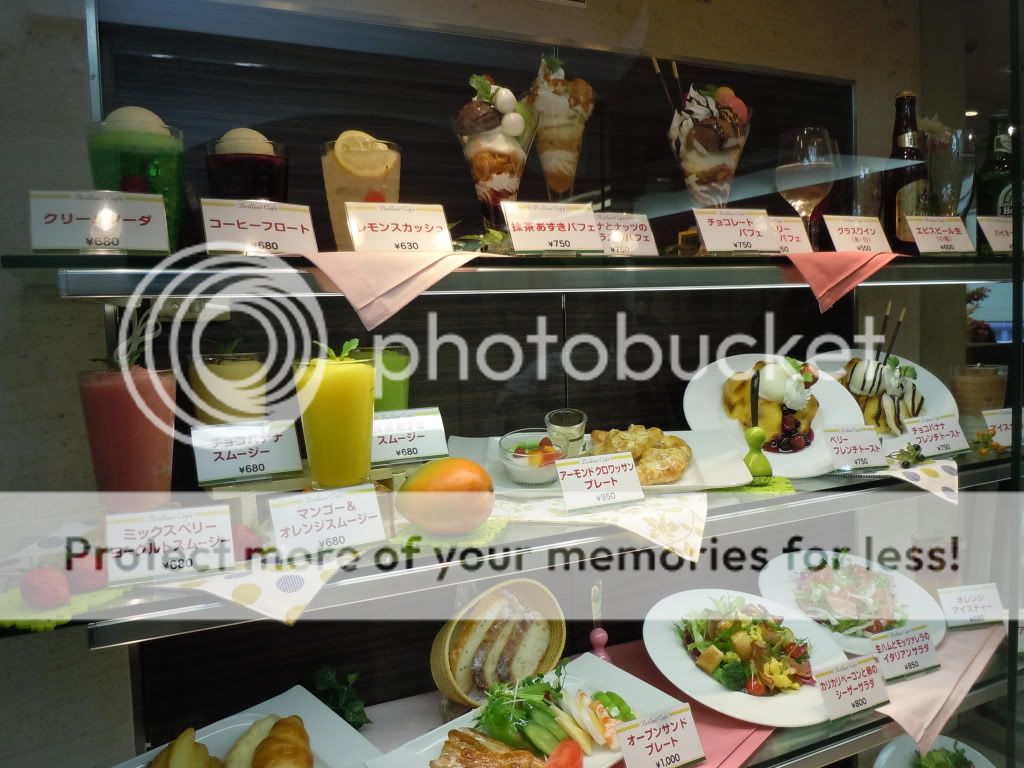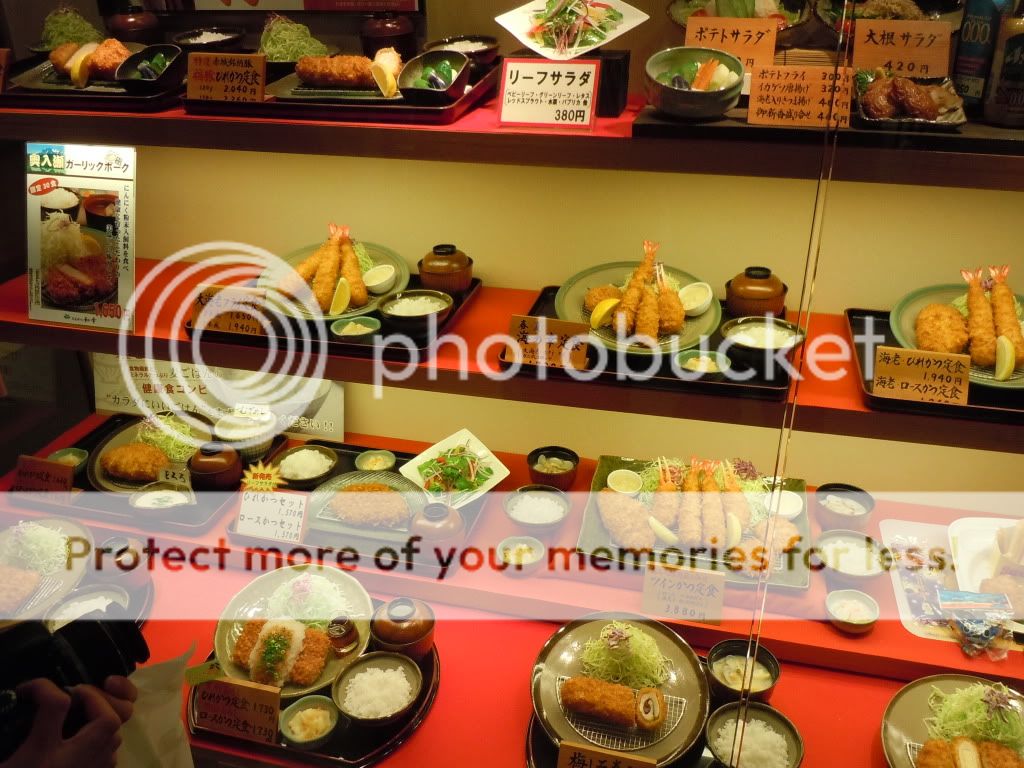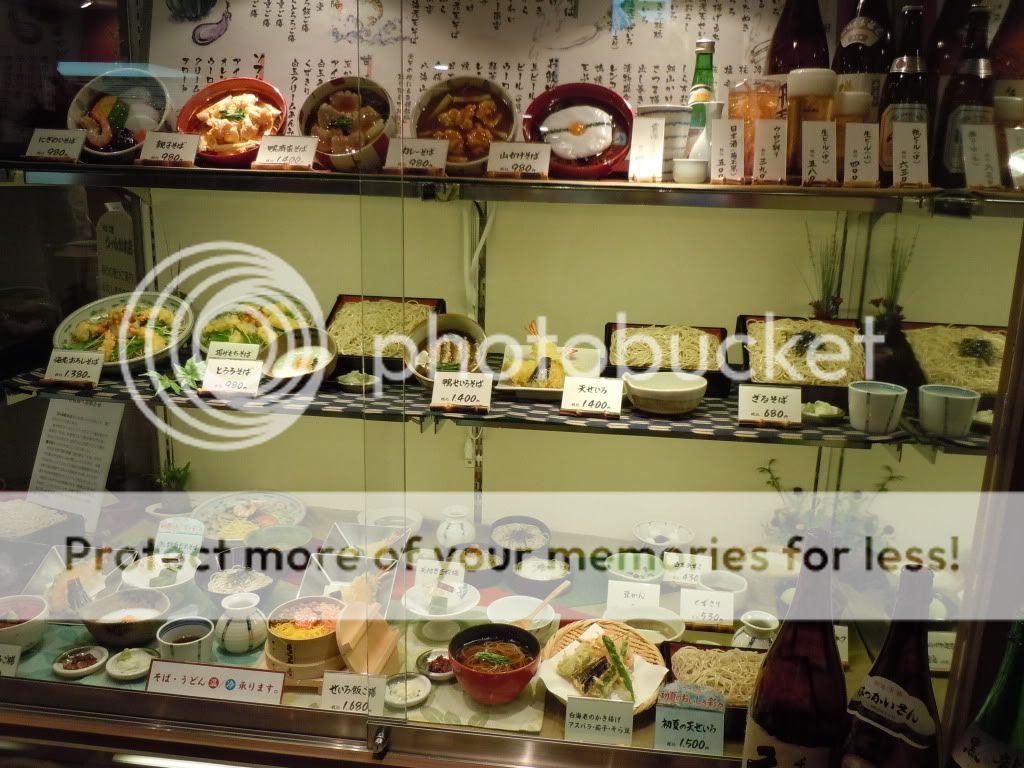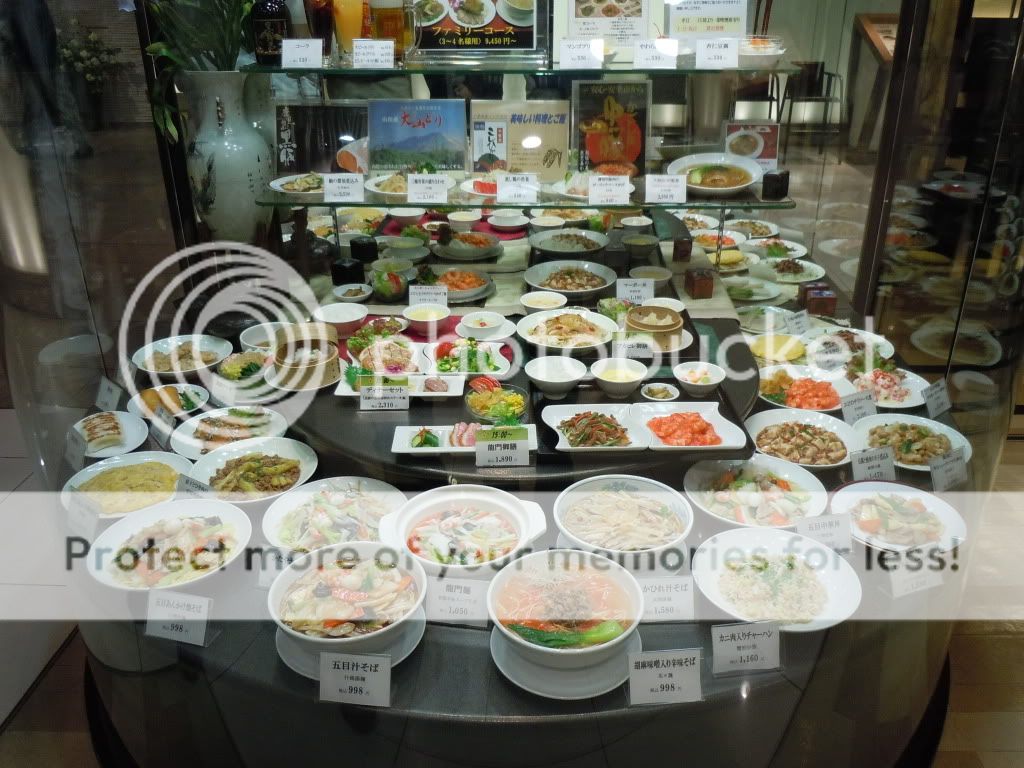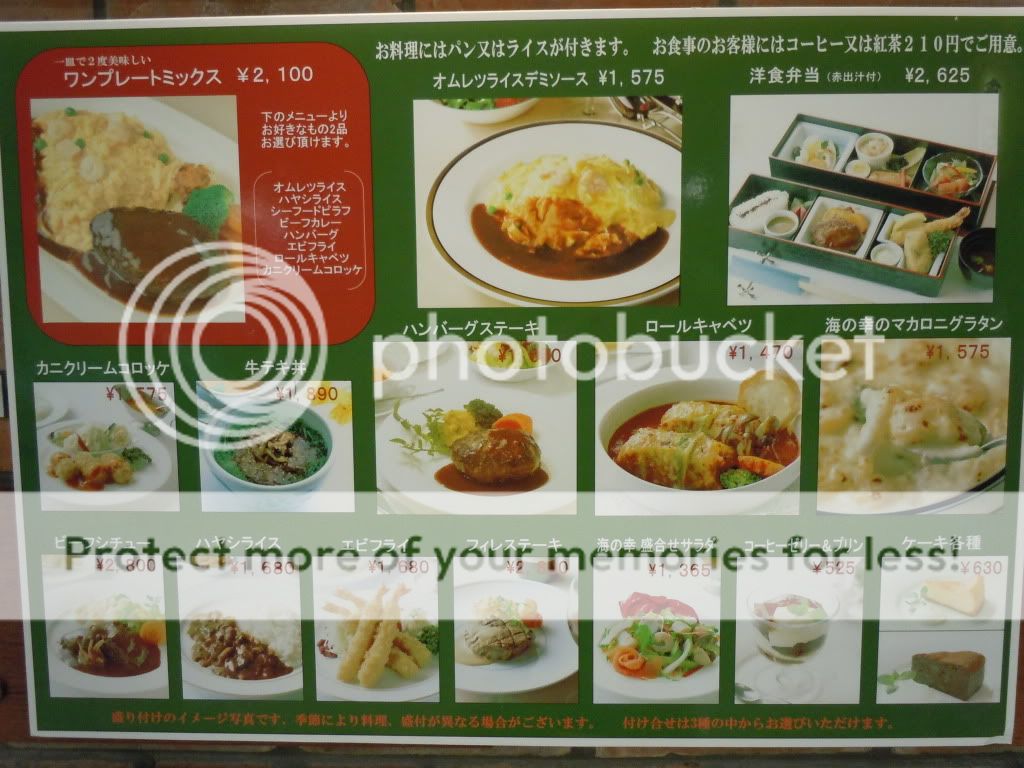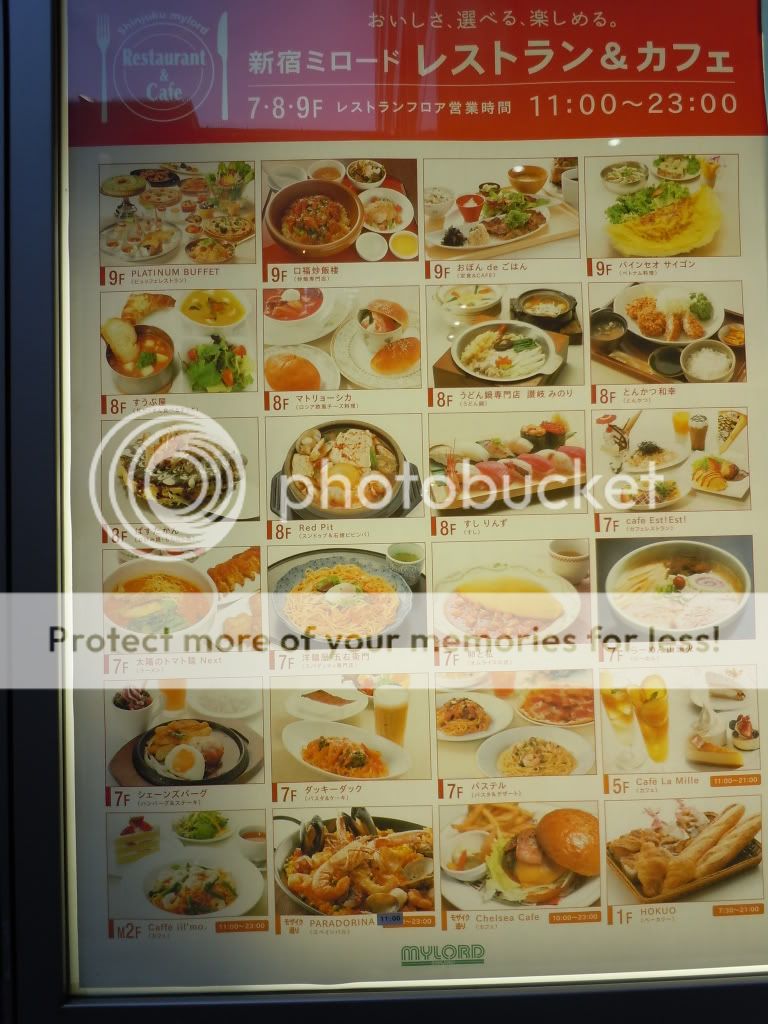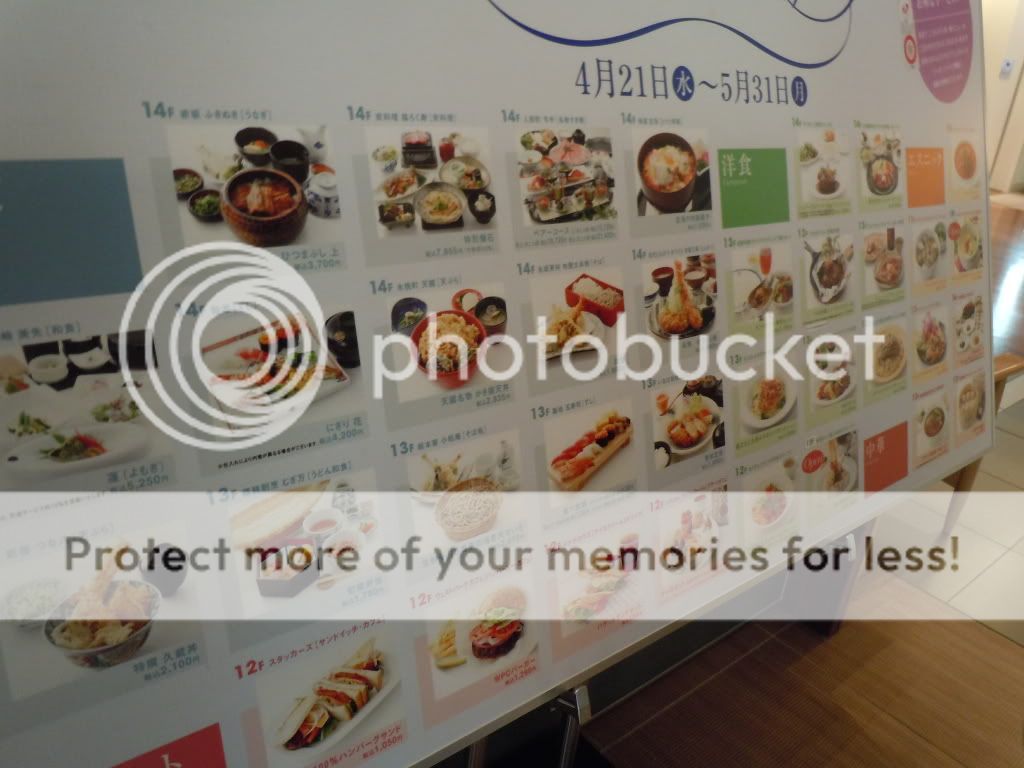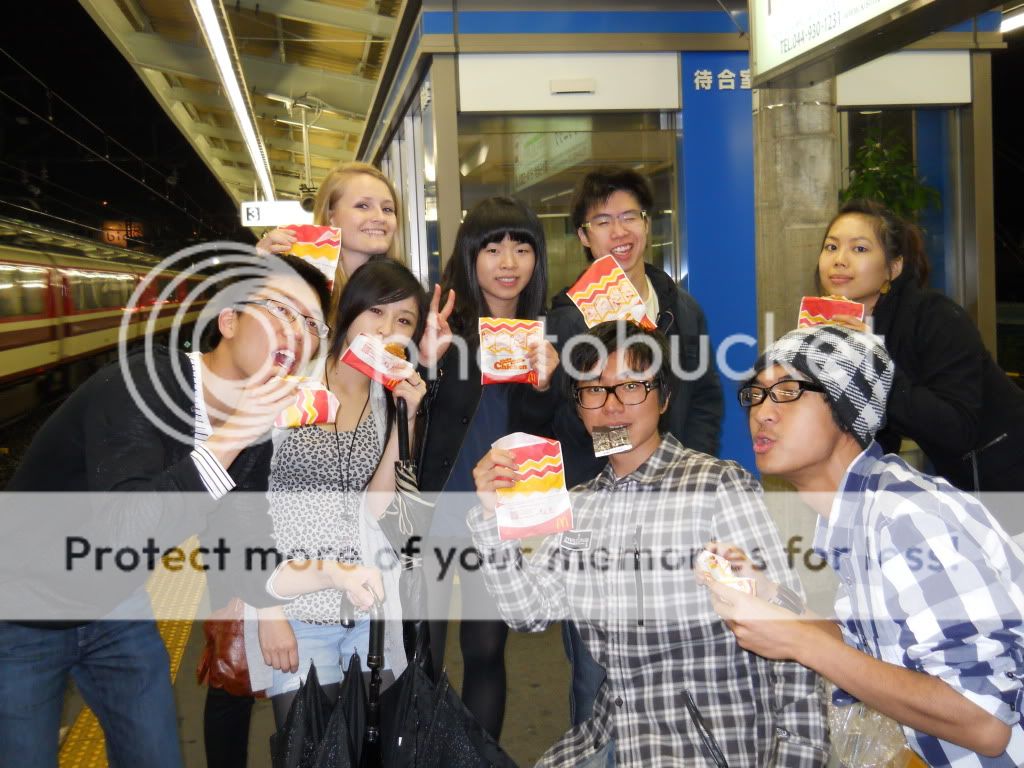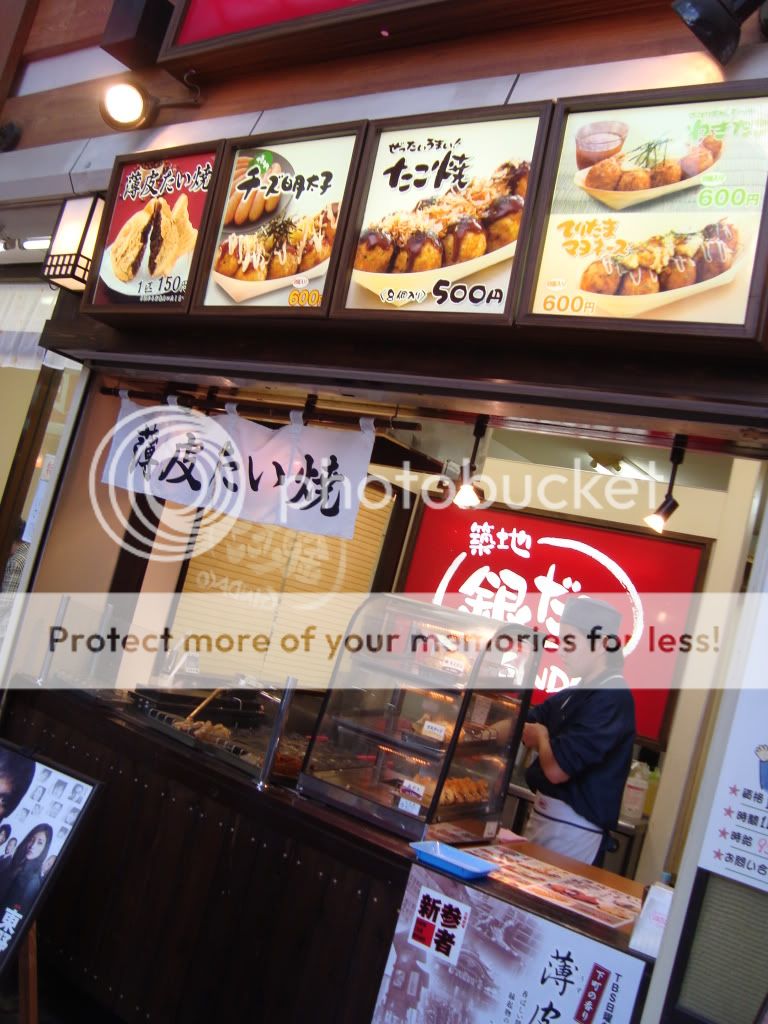So we’re coming to the end of our trip in Japan. Now we’d just like to review what we and others think about Japanese marketing. What's the most interesting? And what kind of marketing is the most effective?
An interview on a few classmates' thoughts:
Jessica's Thoughts:
Personally I think that word of mouth is the best form of advertising. I don’t often watch t.v., so I don’t get to see commercials and I generally ignore the contents of the advertisements on the train and the only reason I ever accept any handouts on the street is to get free tissues—and I don’t think I’ve ever really looked at what those tissues are advertising. By now many of you may know that my two favourite things are shopping and desserts. So here are a few of my experiences with marketing in Tokyo, having to do with shopping and eating.
On the night of the cooking party, I saw a sign waving in the wind, advertising milk pudding. It was for the Fujiya Ginza cake shop right across the street. It sounded so good that a bunch of us ran across the street to take a look. It looked so good! But we were just about to make dinner so I didn’t buy any. Kim and Steph had bought some and said it tasted even better than it looked. I had to try it!

I kept thinking about that pudding and returned a few times to buy it, but to my regret, the shop was either closed or didn’t have any pudding. Today was my lucky day, because the store was open and they had milk pudding! I was so excited to eat it, but we decided to find the Kanagawa river first, to sit down and eat.
We decided to take the bikes instead of paying the fare to ride the train to the next station and found ourselves getting a bit lost. With all the winding roads in Japan, we couldn’t tell which way the road would actually take us. After a few roundabouts we finally made it—after an hour of biking around the neighbourhood! I was so excited; because I could now sit down and enjoy the pudding I had bought. Unfortunately I sat down and found out that they hadn’t given me a spoon. I was determined to eat the pudding though, so I made do. I tried making a makeshift spoon with cardboard…it tasted a bit odd. So I resorted to eating with a piece of chocolate, which got a little messy. But you know what? It was worth it. Turns out, the pudding was really as good as Kim and Steph said! In this case, word of mouth paid off.

Sweets paradise is another place I heard of by mouth. But unfortunately this experience didn’t turn out as well as I had hoped. My friend told me about the dessert buffet and said it was delicious. And I suppose it was, but too much dessert doesn’t make a person feel very good.
You know when you go to buffets you want to have a little taste of everything. Even though I love desserts, I can only take so much. I’m lucky that the cafe mostly served mousse cake—which I'm not a very big fan of. It allowed me to narrow down my choices and not stuff myself sick….well not as sick as I would’ve been anyway. But it looks like a few of us ate a bit too much...


My final example of my experiences with Japanese marketing is of one I experienced with my host family. They had seen a commercial advertising cheap clothes, so they looked up the address and decided to take me to a few bargain shops. The first shop we went to was called “Don Don Down on Wednesday". This shop was really neat; it sold cheap fashionable clothes and had a unique system to identify the prices of clothing. Each price was designated to a fruit or vegetable. Therefore, if you grabbed a piece of clothing with a grape tag on it, it cost 100 yen, whereas if it had a banana tag on it, it cost 4000 yen. The already cheap clothes are even discounted more on Wednesdays...hence the store name. We found that the store really met our expectations after seeing the commercial.



However, the second bargain shop that we went to wasn’t as cheap as the commercial made it out to be. I found clothes in the shop selling for what seemed to be its original price. It was a second hand shop, and the prices they were trying to ask for seemed expensive even for a normal shop. We were a bit disappointed with this shop and quickly left.

It seems every type of marketing has its ups and downs. Sometimes you can make some great finds, but on the other hand, you may be let down. When advertisements don’t paint a realistic picture, they can end up with some disappointed customers. And we all know, word of mouth works both ways. If someone tells you that this place is awesome, you’ll probably go. If someone says its awful then you most likely won’t check it out.
Chris's Thoughts:
What I thought was the most effective Japanese sales tactics were:
The staged discounts on food products in the hours before the stores were closing. It seems that most stores do this, especially on fruit (which is very expensive in Japan) and bakery products. As a travel tip, I saved a lot of money (usually around 50% off) on very tasty Japanese melon by buying it at the grocery store after 11:00.
Kim's Thoughts:
Most effective marketing technique among peers:
Tissues. How can anyone resist getting free tissue packs? Tissues are useful in a lot of ways. If you suddenly go into a toilet with no tissue paper, what can you rely on? You can rely on the many promoters standing on the street handing out tissue packs. Having interviewed some of the fellow foreign students while in our stay in Japan, Kelly says, “We are already on a tight budget, in the end saving just a little makes a big difference! I can receive about 10 packs just in one street.” Every single tissue pack has a little paper advertisement in them. Whether a person look at it or not is another thing, but the fact is that since it is a free, usable product, no one will reject receiving it.
JP's Thoughts:
This is just a little add-on of something that I thought would be nice to have before you take a visit to Tokyo and Kenshukan in the future. It relates indirectly to marketing through budgeting and planning ahead – two things that are often overlooked when in a new culture, exploring a lot of new surroundings on a day to day basis. Just ask the others who went here!
Survival Guide 101: A Marketing Approach
Tips before you leave home:
Always make sure that you have an adequate supply of cash before you leave for Japan. We'd suggest bringing extra money, just in case there are things that you want to shop for, or things that you unexpectedly buy that dip into your budget. The worst thing that can happen to you while you're in Japan is for you to be bound by the short leash (money-wise) and miss out on fun and activities that are once in a lifetime! There are plenty of ways to get money changed at the station or the airport, but you never know when things don't work out according to plan. There have been a few cases in our Senshu group of people requiring multiple dips into their savings, or having credit cards and debit cards not work at the machines, so if you're feeling uncomfortable or insecure about money issues, it's best to bring more than you need rather than less.
NB1: Budget more than you think you'll need by about 1.5-2 times. It gives you security, flexibility, and assurance that you will have what it takes to survive and enjoy your time here in Japan. It's a once in a lifetime experience, so it should be treated as such! If you're worried, Kenshukan has a very nice security box apparatus set up so that you can be at peace leaving valuables such as your passport, identification and money at the dorm without fear of losing it. Remember, to take advantage of all the good deals that you'll find while you're here, the first thing that you'll need is a supply of coin to back it up!
Upon arrival at Kenshukan:
Settling in can be done fairly quickly, and the dorms are quite safe relatively. Things to be careful of: There are stairs that you have to climb with your luggage (1-2 floors) so try to keep things lighter upon arrival. You'll want to have some extra space for souvenirs and such when you get back anyways, so one possibility that two of our group did was pack a small luggage inside a bigger one and only fill up the space part way. In that way, you can set yourself up for mass purchases or split bags if you're traveling around after the program finishes. (Ie. Traveling to a far location for a couple days and forwarding your other bag to the next destination for less hassle on the train/shinkansen).
NB2: Be prepared to walk a LOT! If you aren't used to doing much walking in Calgary, or if your walking is limited to just around the campus, it might be good to start breaking in shoes and getting your feet used to the extra foot traffic you'll encounter in Japan. Most of the transportation here is done by walking to and from train stations and around the areas in Greater Tokyo, so be sure to come well with your feet well worn in! The best opportunities to find good deals can be found on the streets; in our experiences, it seems like street shopping and passing by sidewalk salesman can net you a lot of good information and discounts!
Stuff to see and do around the station:
Need any necessities and grocery items? There's a great supermarket called “Life” right by the station, a stone's throw away for you to pick up good deals on stuff you might not want to bring all the way to Japan – shampoo, toiletries, etc. Prices are reasonable – and discounts are available as mentioned earlier closer to close time. Many people used Life as a real lifeline as a key to their successful stay here =)
Worried about cooking? I can't cook basically anything – when I was here in Japan last time, I didn't notice that one of the packages of sauce I bought was lined on the inside with aluminum and lit my microwave on fire... so I'm pretty much the opposite of kitchen-smart. There's a fair abundance of food restaurants around the station – from kaiten (conveyor belt) sushi which is amazingly high tech, to Italian, Indian and Chinese cuisine to fit your international dish cravings, and an abundance of ramen, donburi and Japanese set menu places to choose from around the immediate vicinity of the station. Everything is within a ten minute walk of the dorm/station, making things convenient and easy for you to settle right in or cater to your tastes. If having all this convenience right at your fingertips isn't considered great marketing, I don't know what would be...
NB3: I personally found this point to be the single greatest point of marketing and influence in my stay here in Japan. Whenever I needed something from a drink (easily obtained at a shop or a vending machine) to a bite to eat (restaurants were my best friends), to some entertainment (we often used the discount coupons for karaoke that were being handed out at the station by employees), having everything available so readily is a pure bliss to have, and almost a thing you'll take for granted after a few weeks living here.
What to look out for on trains and in the town:
Trains can be crowded, so I'd be careful about how much you spend in a day. However, all the trains have convenient shelves up above the seating in case you can't fit in properly with all the bags of stuff you've got. The actual train itself is comparatively safe to other places in the world – I've had a friend who experienced a time when he lost his camera in the middle of a crowded fireworks festival by losing it on the ground. The number of people on the river bank made the people traffic like a stream, so he couldn't go back to look for it or try and pick it up – but when he got across to the other side of the shore where the lost and found was, someone had already picked up the camera and brought it across ahead of him – pictures and everything still intact.
Or the fact that waiters and other service people will chase you down for blocks if you leave your wallet in a public place. Their kindness as a collective whole knows no bounds from my experience, and while its slightly off the truth for sure, I'm just as certain others on the trip will feel the same as I do in this regard =)
NB4: In the town, the big sales and the small shops tend to have bargains that you won't find in the mainstream market. If one station area doesn't have something that you want, try to find another area and you'll likely find more variety and something that suits your preference. Shinjuku is a mini city in itself, Shibuya and Shinjuku hold a lot of places that you can hang out and shop, and Akihabara is a great place to buy electronics like an electronic dictionary (if you're looking to shop for a translator device here, they're great, or so I've heard).
All in all, this trip was an awesome and worthwhile experience, and I hope that assuming the desire is there, all of you reading this blog will have an opportunity to come to Japan (again)!
An interview on a few classmates' thoughts:
Jessica's Thoughts:
Personally I think that word of mouth is the best form of advertising. I don’t often watch t.v., so I don’t get to see commercials and I generally ignore the contents of the advertisements on the train and the only reason I ever accept any handouts on the street is to get free tissues—and I don’t think I’ve ever really looked at what those tissues are advertising. By now many of you may know that my two favourite things are shopping and desserts. So here are a few of my experiences with marketing in Tokyo, having to do with shopping and eating.
On the night of the cooking party, I saw a sign waving in the wind, advertising milk pudding. It was for the Fujiya Ginza cake shop right across the street. It sounded so good that a bunch of us ran across the street to take a look. It looked so good! But we were just about to make dinner so I didn’t buy any. Kim and Steph had bought some and said it tasted even better than it looked. I had to try it!

I kept thinking about that pudding and returned a few times to buy it, but to my regret, the shop was either closed or didn’t have any pudding. Today was my lucky day, because the store was open and they had milk pudding! I was so excited to eat it, but we decided to find the Kanagawa river first, to sit down and eat.
We decided to take the bikes instead of paying the fare to ride the train to the next station and found ourselves getting a bit lost. With all the winding roads in Japan, we couldn’t tell which way the road would actually take us. After a few roundabouts we finally made it—after an hour of biking around the neighbourhood! I was so excited; because I could now sit down and enjoy the pudding I had bought. Unfortunately I sat down and found out that they hadn’t given me a spoon. I was determined to eat the pudding though, so I made do. I tried making a makeshift spoon with cardboard…it tasted a bit odd. So I resorted to eating with a piece of chocolate, which got a little messy. But you know what? It was worth it. Turns out, the pudding was really as good as Kim and Steph said! In this case, word of mouth paid off.

Sweets paradise is another place I heard of by mouth. But unfortunately this experience didn’t turn out as well as I had hoped. My friend told me about the dessert buffet and said it was delicious. And I suppose it was, but too much dessert doesn’t make a person feel very good.
You know when you go to buffets you want to have a little taste of everything. Even though I love desserts, I can only take so much. I’m lucky that the cafe mostly served mousse cake—which I'm not a very big fan of. It allowed me to narrow down my choices and not stuff myself sick….well not as sick as I would’ve been anyway. But it looks like a few of us ate a bit too much...


My final example of my experiences with Japanese marketing is of one I experienced with my host family. They had seen a commercial advertising cheap clothes, so they looked up the address and decided to take me to a few bargain shops. The first shop we went to was called “Don Don Down on Wednesday". This shop was really neat; it sold cheap fashionable clothes and had a unique system to identify the prices of clothing. Each price was designated to a fruit or vegetable. Therefore, if you grabbed a piece of clothing with a grape tag on it, it cost 100 yen, whereas if it had a banana tag on it, it cost 4000 yen. The already cheap clothes are even discounted more on Wednesdays...hence the store name. We found that the store really met our expectations after seeing the commercial.


However, the second bargain shop that we went to wasn’t as cheap as the commercial made it out to be. I found clothes in the shop selling for what seemed to be its original price. It was a second hand shop, and the prices they were trying to ask for seemed expensive even for a normal shop. We were a bit disappointed with this shop and quickly left.

It seems every type of marketing has its ups and downs. Sometimes you can make some great finds, but on the other hand, you may be let down. When advertisements don’t paint a realistic picture, they can end up with some disappointed customers. And we all know, word of mouth works both ways. If someone tells you that this place is awesome, you’ll probably go. If someone says its awful then you most likely won’t check it out.
Chris's Thoughts:
What I thought was the most effective Japanese sales tactics were:
The staged discounts on food products in the hours before the stores were closing. It seems that most stores do this, especially on fruit (which is very expensive in Japan) and bakery products. As a travel tip, I saved a lot of money (usually around 50% off) on very tasty Japanese melon by buying it at the grocery store after 11:00.
Kim's Thoughts:
Most effective marketing technique among peers:
Tissues. How can anyone resist getting free tissue packs? Tissues are useful in a lot of ways. If you suddenly go into a toilet with no tissue paper, what can you rely on? You can rely on the many promoters standing on the street handing out tissue packs. Having interviewed some of the fellow foreign students while in our stay in Japan, Kelly says, “We are already on a tight budget, in the end saving just a little makes a big difference! I can receive about 10 packs just in one street.” Every single tissue pack has a little paper advertisement in them. Whether a person look at it or not is another thing, but the fact is that since it is a free, usable product, no one will reject receiving it.
JP's Thoughts:
This is just a little add-on of something that I thought would be nice to have before you take a visit to Tokyo and Kenshukan in the future. It relates indirectly to marketing through budgeting and planning ahead – two things that are often overlooked when in a new culture, exploring a lot of new surroundings on a day to day basis. Just ask the others who went here!
Survival Guide 101: A Marketing Approach
Tips before you leave home:
Always make sure that you have an adequate supply of cash before you leave for Japan. We'd suggest bringing extra money, just in case there are things that you want to shop for, or things that you unexpectedly buy that dip into your budget. The worst thing that can happen to you while you're in Japan is for you to be bound by the short leash (money-wise) and miss out on fun and activities that are once in a lifetime! There are plenty of ways to get money changed at the station or the airport, but you never know when things don't work out according to plan. There have been a few cases in our Senshu group of people requiring multiple dips into their savings, or having credit cards and debit cards not work at the machines, so if you're feeling uncomfortable or insecure about money issues, it's best to bring more than you need rather than less.
NB1: Budget more than you think you'll need by about 1.5-2 times. It gives you security, flexibility, and assurance that you will have what it takes to survive and enjoy your time here in Japan. It's a once in a lifetime experience, so it should be treated as such! If you're worried, Kenshukan has a very nice security box apparatus set up so that you can be at peace leaving valuables such as your passport, identification and money at the dorm without fear of losing it. Remember, to take advantage of all the good deals that you'll find while you're here, the first thing that you'll need is a supply of coin to back it up!
Upon arrival at Kenshukan:
Settling in can be done fairly quickly, and the dorms are quite safe relatively. Things to be careful of: There are stairs that you have to climb with your luggage (1-2 floors) so try to keep things lighter upon arrival. You'll want to have some extra space for souvenirs and such when you get back anyways, so one possibility that two of our group did was pack a small luggage inside a bigger one and only fill up the space part way. In that way, you can set yourself up for mass purchases or split bags if you're traveling around after the program finishes. (Ie. Traveling to a far location for a couple days and forwarding your other bag to the next destination for less hassle on the train/shinkansen).
NB2: Be prepared to walk a LOT! If you aren't used to doing much walking in Calgary, or if your walking is limited to just around the campus, it might be good to start breaking in shoes and getting your feet used to the extra foot traffic you'll encounter in Japan. Most of the transportation here is done by walking to and from train stations and around the areas in Greater Tokyo, so be sure to come well with your feet well worn in! The best opportunities to find good deals can be found on the streets; in our experiences, it seems like street shopping and passing by sidewalk salesman can net you a lot of good information and discounts!
Stuff to see and do around the station:
Need any necessities and grocery items? There's a great supermarket called “Life” right by the station, a stone's throw away for you to pick up good deals on stuff you might not want to bring all the way to Japan – shampoo, toiletries, etc. Prices are reasonable – and discounts are available as mentioned earlier closer to close time. Many people used Life as a real lifeline as a key to their successful stay here =)
Worried about cooking? I can't cook basically anything – when I was here in Japan last time, I didn't notice that one of the packages of sauce I bought was lined on the inside with aluminum and lit my microwave on fire... so I'm pretty much the opposite of kitchen-smart. There's a fair abundance of food restaurants around the station – from kaiten (conveyor belt) sushi which is amazingly high tech, to Italian, Indian and Chinese cuisine to fit your international dish cravings, and an abundance of ramen, donburi and Japanese set menu places to choose from around the immediate vicinity of the station. Everything is within a ten minute walk of the dorm/station, making things convenient and easy for you to settle right in or cater to your tastes. If having all this convenience right at your fingertips isn't considered great marketing, I don't know what would be...
NB3: I personally found this point to be the single greatest point of marketing and influence in my stay here in Japan. Whenever I needed something from a drink (easily obtained at a shop or a vending machine) to a bite to eat (restaurants were my best friends), to some entertainment (we often used the discount coupons for karaoke that were being handed out at the station by employees), having everything available so readily is a pure bliss to have, and almost a thing you'll take for granted after a few weeks living here.
What to look out for on trains and in the town:
Trains can be crowded, so I'd be careful about how much you spend in a day. However, all the trains have convenient shelves up above the seating in case you can't fit in properly with all the bags of stuff you've got. The actual train itself is comparatively safe to other places in the world – I've had a friend who experienced a time when he lost his camera in the middle of a crowded fireworks festival by losing it on the ground. The number of people on the river bank made the people traffic like a stream, so he couldn't go back to look for it or try and pick it up – but when he got across to the other side of the shore where the lost and found was, someone had already picked up the camera and brought it across ahead of him – pictures and everything still intact.
Or the fact that waiters and other service people will chase you down for blocks if you leave your wallet in a public place. Their kindness as a collective whole knows no bounds from my experience, and while its slightly off the truth for sure, I'm just as certain others on the trip will feel the same as I do in this regard =)
NB4: In the town, the big sales and the small shops tend to have bargains that you won't find in the mainstream market. If one station area doesn't have something that you want, try to find another area and you'll likely find more variety and something that suits your preference. Shinjuku is a mini city in itself, Shibuya and Shinjuku hold a lot of places that you can hang out and shop, and Akihabara is a great place to buy electronics like an electronic dictionary (if you're looking to shop for a translator device here, they're great, or so I've heard).
All in all, this trip was an awesome and worthwhile experience, and I hope that assuming the desire is there, all of you reading this blog will have an opportunity to come to Japan (again)!





